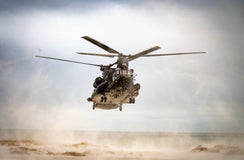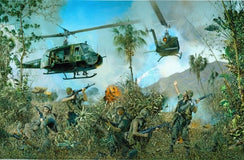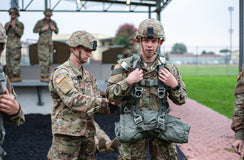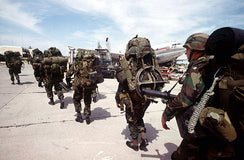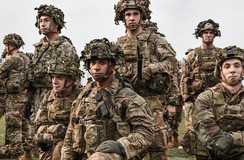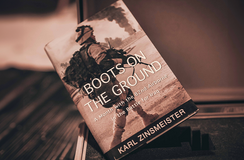The Elusive Blue Air Assault Beret
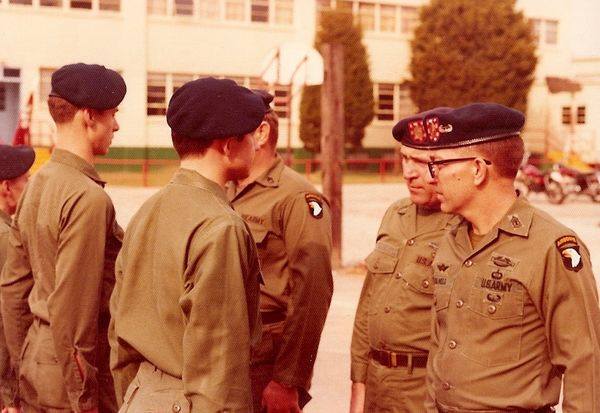
Blue Air Assault Berets: A Brief Chapter in Military History
In the accounts of military tradition, berets have often stood out as symbols of honor and excellence, providing soldiers with an extra element of pride. They adorn soldiers' heads, signifying their commitment to a unique calling. While everyone in the Army dons a beret sometimes for occasions or specific units as its standard headwear, some are truly special, such as the green beret of the U.S. Special Forces or the new gun-metal gray beret of the United Kingdom's recently established Ranger Regiment. However, did you know that back in the 1970s, the 101st Airborne Division sported its distinctive headgear - the blue Air Assault beret?! Let's check the story out.

101st Airborne Division soldiers wear the blue beret during a ceremony. (Photo/U.S. Army)
101st Airborne Division – Distinction through the Air Assault Blue Beret
The blue beret's existence in the 101st Airborne Division was a product of a captivating period in Army history. Dr. John O'Brien, the Don F. Pratt Museum director at Fort Campbell, Kentucky, explains, "The Army did go beret crazy from 1973 to 1978." This beret craze was initiated by Gen. Frederick Weyand, the Chief of Staff of the Army at the time. In finding morale-boosting elements and symbolism, operational commanders were given the authority to authorize distinctive berets for their units. In this spirit, the 101st Airborne Division (Air Assault) chose the blue beret to distinguish itself from the maroon berets of airborne units. This was a significant milestone for the 101st at the time, trying to differentiate themselves from the rest of the Airborne Community.
The 101st Airborne Division was also undergoing a significant transformation during this period. Having shifted from an airborne unit to an air assault division during their deployment in Vietnam, they were officially removed from jump status in 1974. This change authorized them to wear the blue beret alongside the air assault badge. Each battalion or squadron within the division featured a unit flash, tracing its lineage back to World War II.

Back to Normal: The Decision Remove Air Assault Blue Berets
Berets have a rich history in the Army, dating back to the adoption of red berets by the 509th Parachute Infantry Regiment during World War II. These berets, although unofficial, became an enduring symbol of airborne units. A decade later, Special Forces soldiers adopted green berets in homage to their British counterparts. Initially worn only in the field due to Army regulations, the green beret gained official approval in 1961 after President John F. Kennedy visited Fort Bragg, North Carolina. Both the red and tan berets are influences of the British Paratroopers and British Special Air Services (SAS) forces, respectively.
The early 1970s were marked by a need to boost military morale. The Vietnam War ended, and the Army was transitioning to an all-volunteer force. Recruitment campaigns emphasized various perks, including travel opportunities and the freedom to maintain stylish sideburns. Incorporating berets as official uniform items was seen as a means to enhance morale and foster a sense of belonging.
However, the era of the blue beret was transitory. The spread of different beret colors, including maroon, blue, and black, led to a lack of uniformity. Ranger units and even armored units were adopting various beret colors. For instance, the 172nd Infantry Brigade in Alaska was sporting a brown beret. In response, the new Army Chief of Staff, Gen. Bernard Rogers, decided to standardize Army headgear and abolish berets in 1979. However, a partial reversal occurred in 1980, with Ranger units wearing black berets and airborne units donning maroon berets. Unfortunately, the blue Air assault beret did not make the new list.

Various flashes and distinguished unit insignias (Photo/U.S. Army)
Blue no More
Today, the blue beret is associated with Air Force Security Forces as it has been standardized since 1975. The Maroon, Green, and Tan berets have survived time and represent tradition, history, and pride. The recent conflicts worldwide will bring a new and revitalized role for the 101st. Their mobility and lethality remain the best on the planet, regardless of the color of their beret.
However, one can't help but wonder if the Army might consider a rebirth of the blue air assault beret as a symbol of their remarkable history. It remains a brief yet intriguing chapter in the storied legacy of the 101st Airborne Division, serving as a reminder of the ever-evolving traditions within the Airborne Community.









